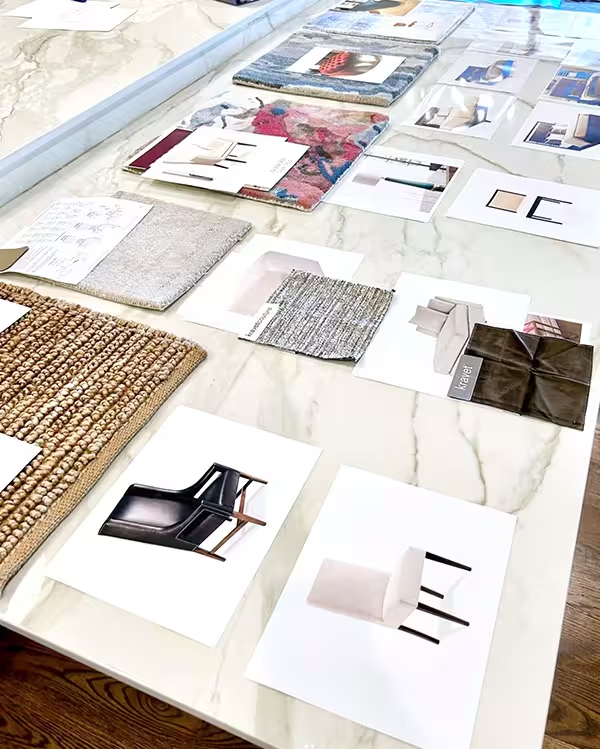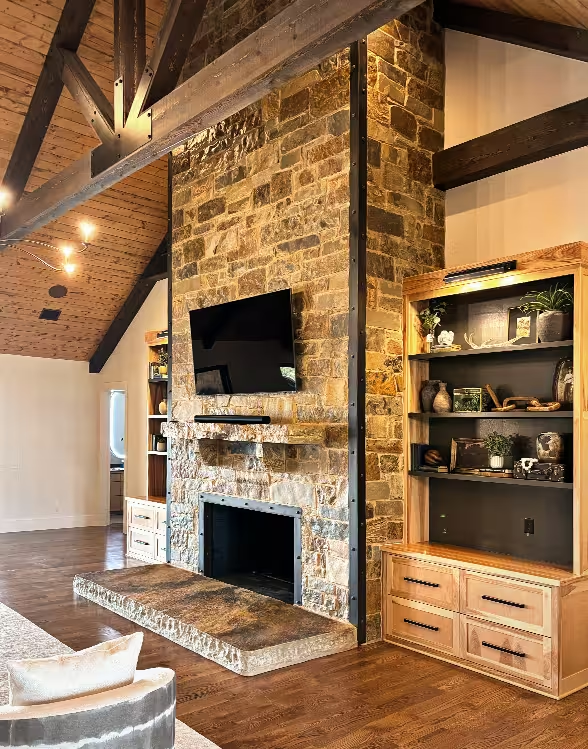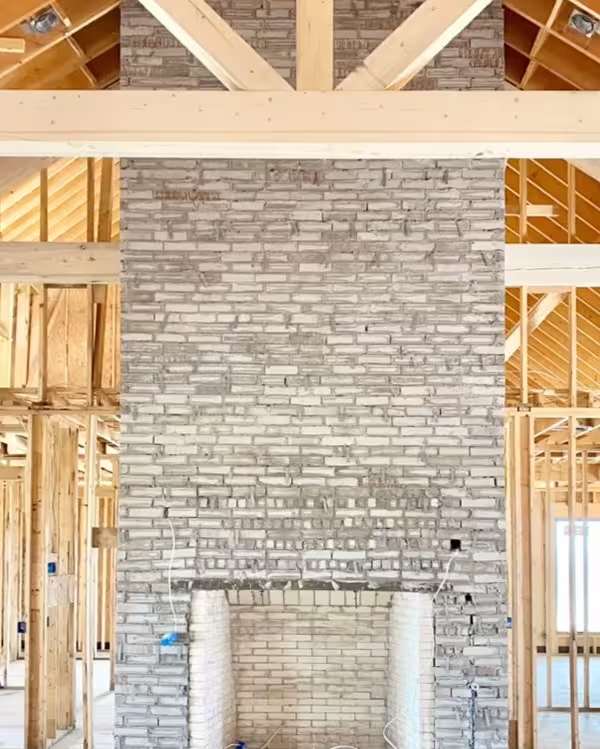Interior Design for New Home Construction


Why Choose Monica McCaskill for Interior Design
Benefits of Hiring an Interior Designer for your New Home Build

Expert Guidance

Cohesive Design

Personalized Spaces
Project Management
Access to Resources
Time and Stress Savings
New Home Construction Deliverables
Interior design deliverables for a new home construction project typically include:
- Design Concept and Mood Boards
- Space Planning and Layouts
- Material and Finish Selections
- Lighting Plans
- Plumbing Fixture Selection
- Custom Cabinetry and Millwork Designs
- Furniture and Décor Selections
- Elevations and Renderings
- Appliance Specifications
- Project Coordination
- Final Styling and Staging


New Home Interior Design FAQs
Here are some ways that having an interior designer can speed up the design construction process:
- Determine the ideal placement of electrical outlets for lighting fixtures.
- Identify the best locations for plumbing fixtures.
- Assess whether a space is appropriately sized for the desired furnishings and adjust the floor plan with the architect as needed.
- Select materials for cabinets, flooring, countertops, and other finishes.
- Plan the placement and installation of specific furniture pieces.
Yes, interior designers can save you money in the long run by helping you make informed decisions and avoid costly mistakes. Their expertise ensures that you choose materials, finishes, and layouts that not only fit your style but are also durable and suitable for your lifestyle, reducing the likelihood of future renovations or repairs. Designers also have access to trade discounts on furniture, fixtures, and materials, which can significantly lower your overall costs.
Moreover, designers create efficient space plans and layouts that optimize the use of your home, potentially reducing the need for additional square footage. They also coordinate with architects and builders to ensure that the construction process runs smoothly, preventing costly delays or changes. By managing the project and keeping it on track, interior designers help you avoid budget overruns and ensure that your investment is well spent.
- Living Room: Often the centerpiece of the home, it needs careful consideration for layout, furnishings, lighting, and décor to create a welcoming and functional space.
- Kitchen: As a high-traffic area, the kitchen requires thoughtful design for cabinetry, countertops, appliances, and overall functionality, as well as aesthetics.
- Dining Room: This space should be designed for both functionality and ambiance, with attention to table settings, lighting, and overall décor.
- Bedrooms: Each bedroom needs to reflect personal style while ensuring comfort and practicality, including choices for bedding, storage, and lighting.
- Bathrooms: Both master and guest bathrooms benefit from design attention to optimize layout, storage, and finishes, creating a relaxing and functional environment.
- Home Office: For those who work from home, a well-designed office enhances productivity and comfort, with attention to layout, ergonomics, and storage.
- Entryway: The first impression of your home, it should be designed to be both welcoming and practical, with attention to lighting, storage, and décor.
- Outdoor Spaces: If applicable, patios, decks, and gardens also benefit from design to enhance usability and integration with the indoor spaces.
